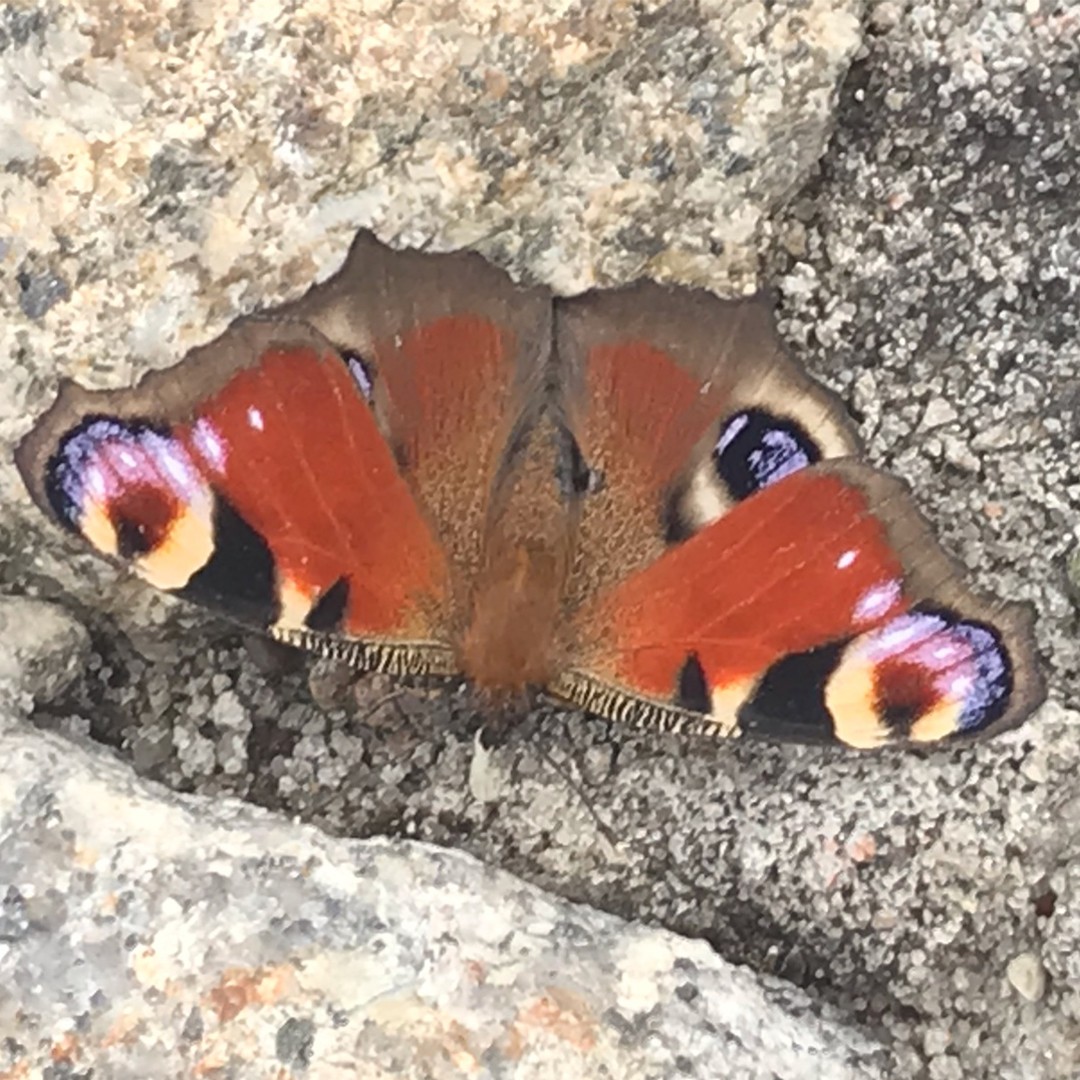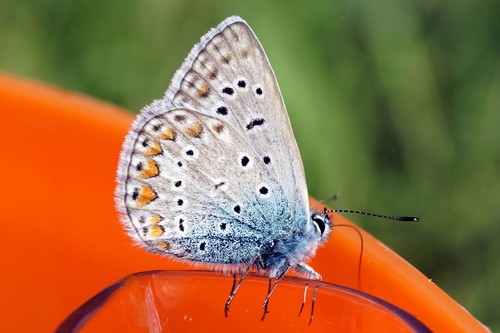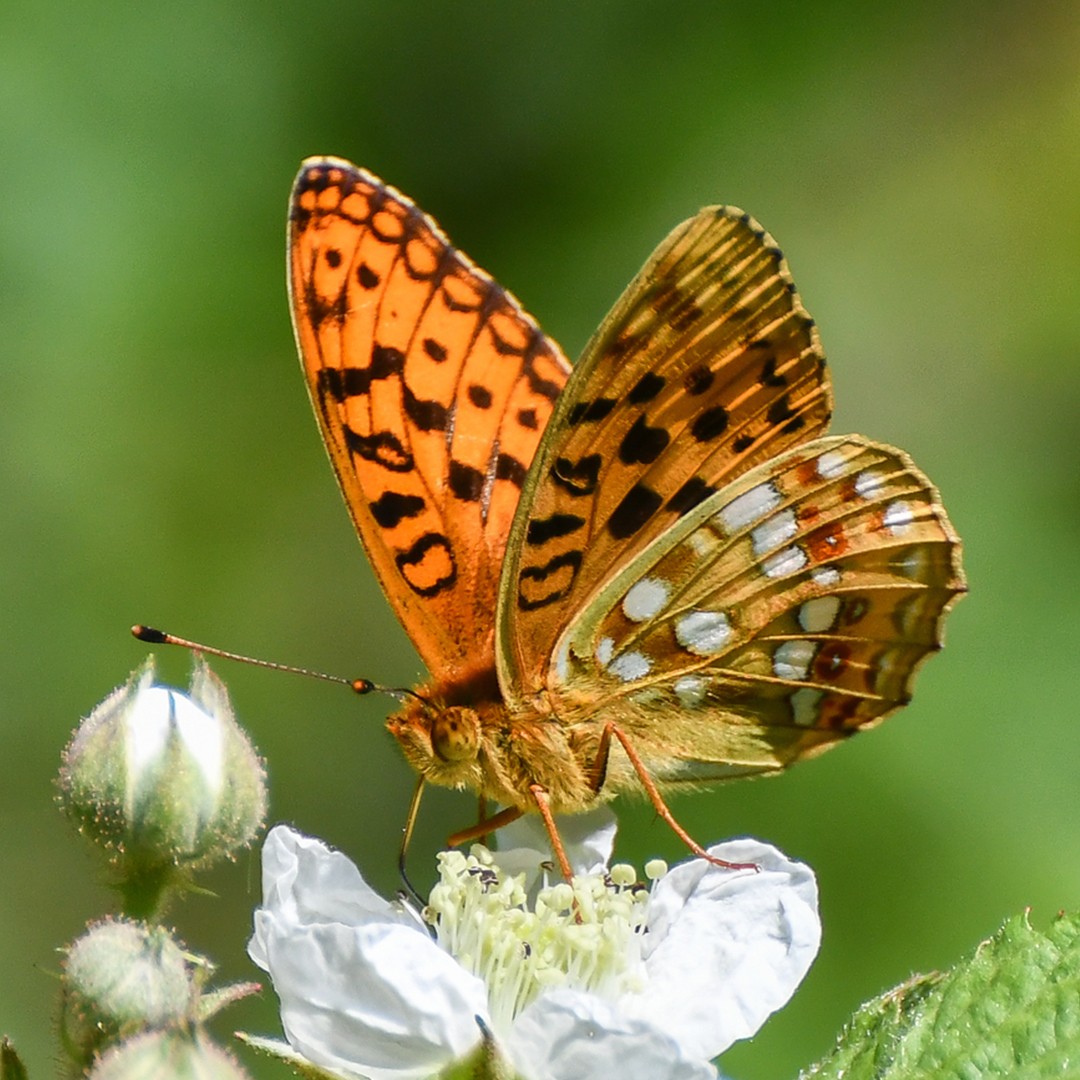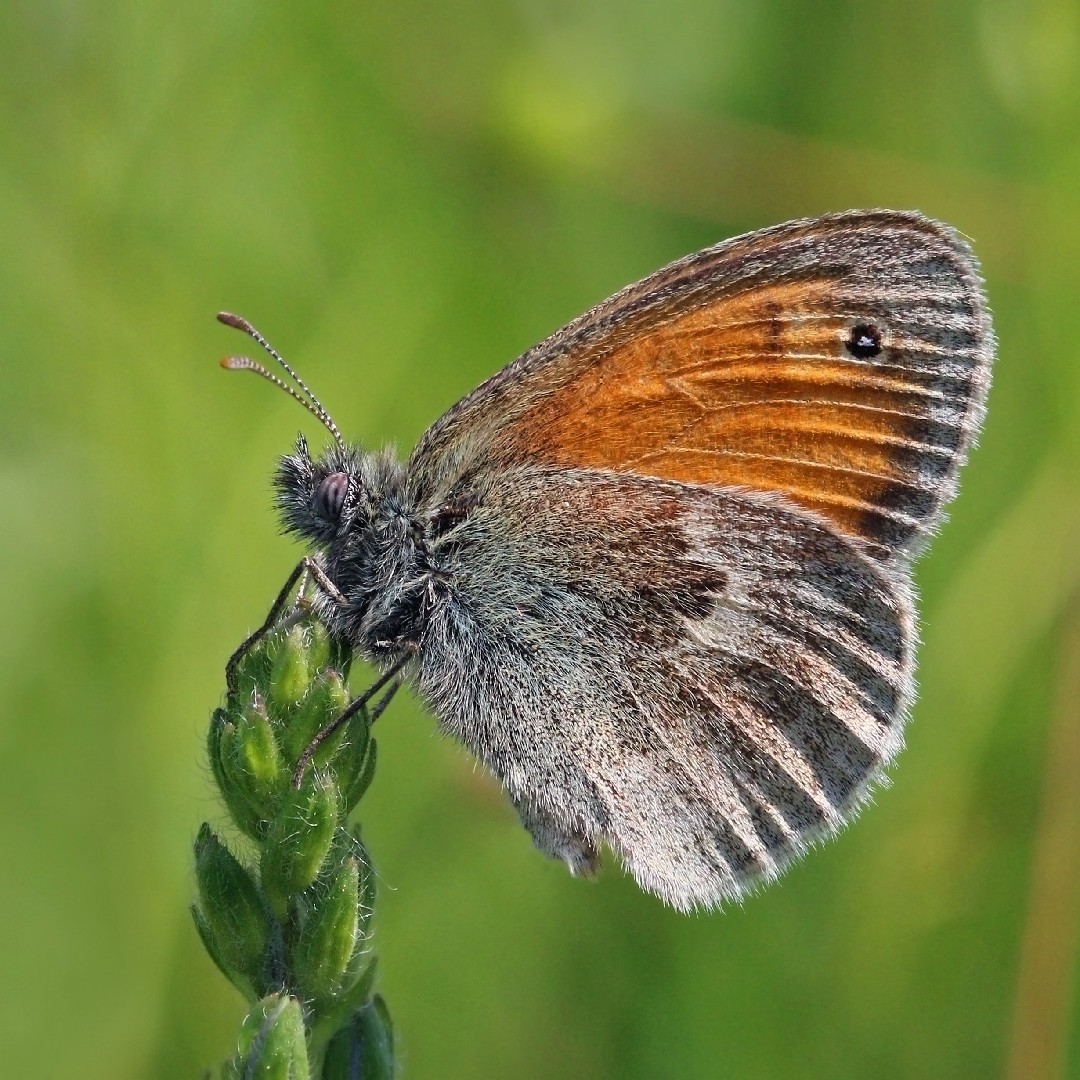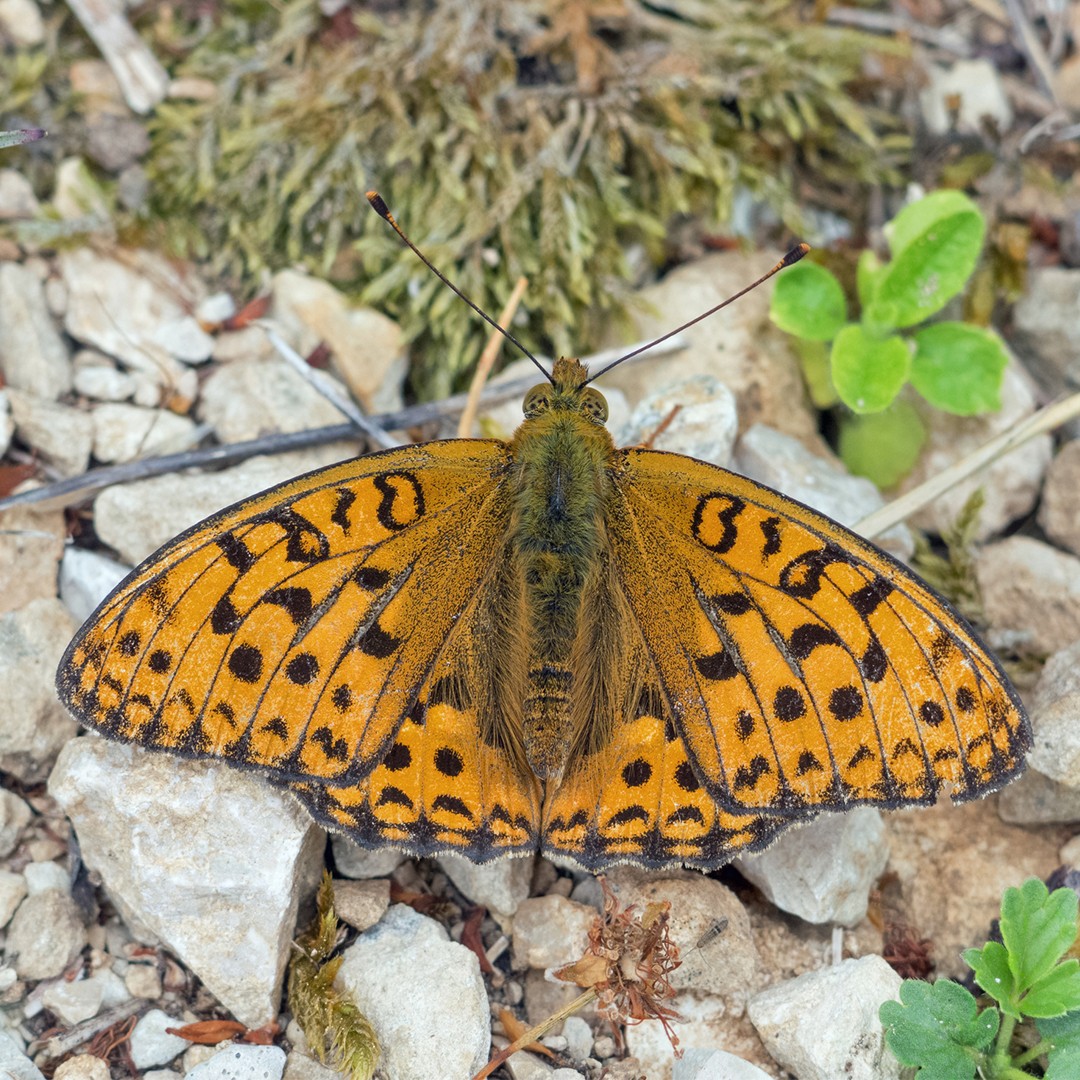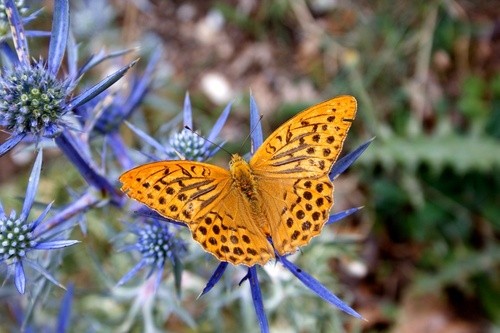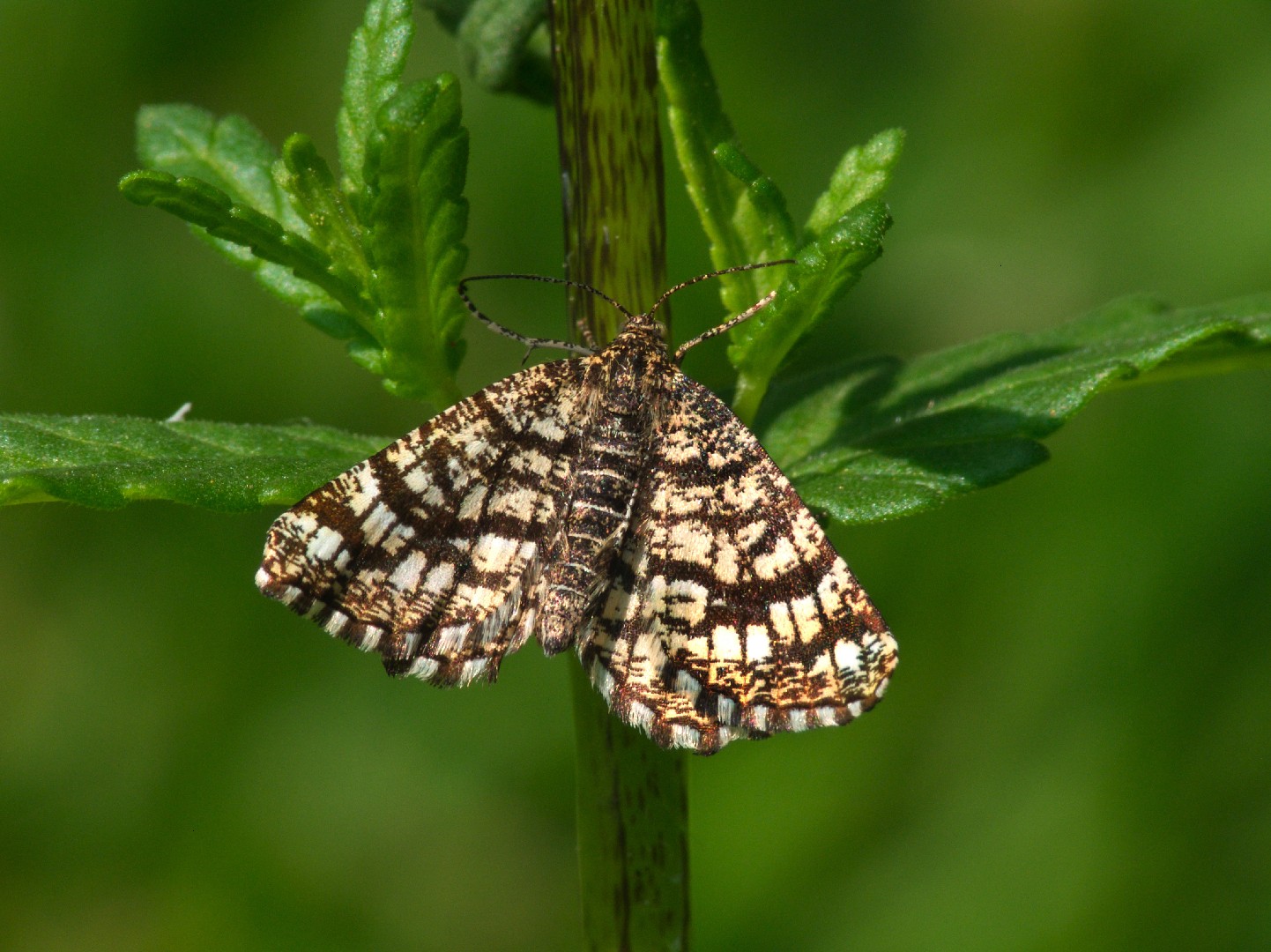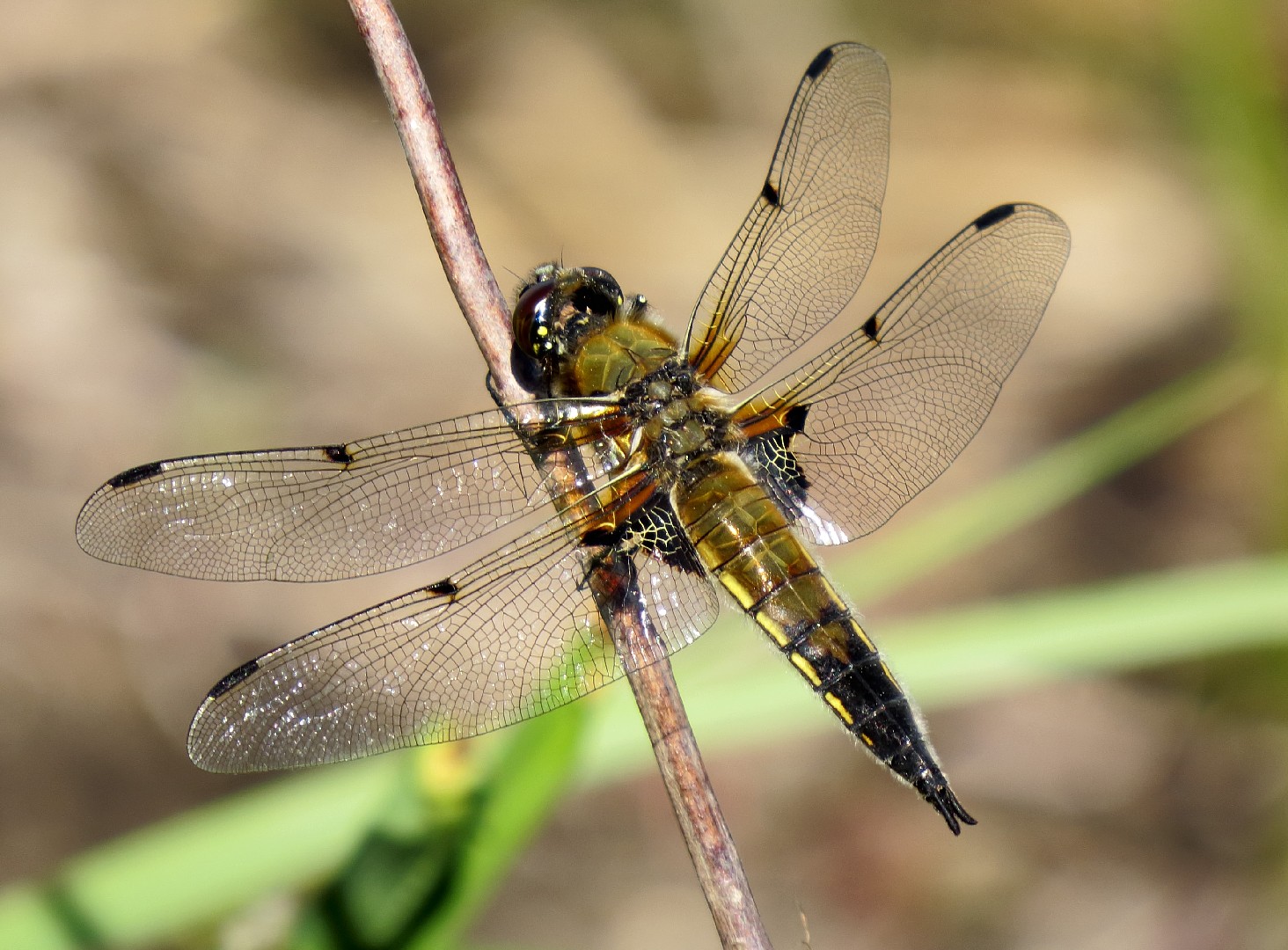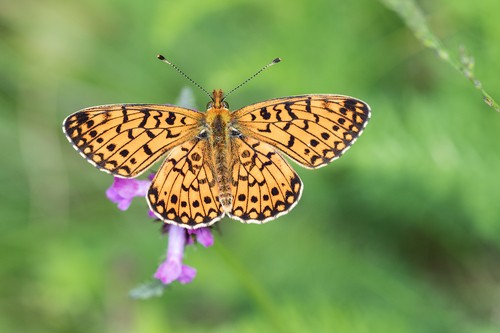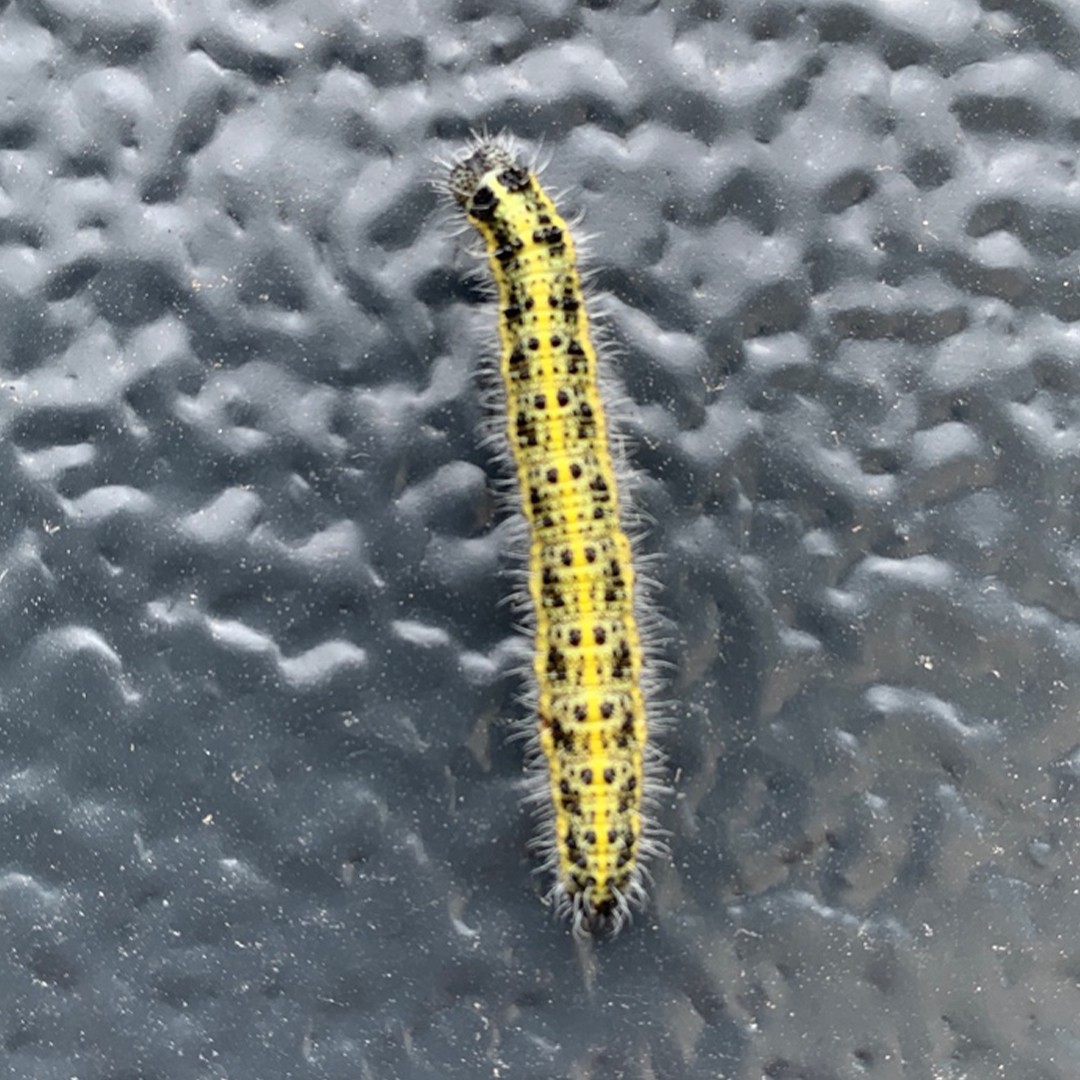Top 20 Most Common Insects in Latvia
Insects, a diverse group of arthropods defined by their exoskeletons and segmented bodies, are not only everywhere in Latvia, but they are also shaped by the region's varying geography. From coastal zones to dense forests, each environment invites its own unique insect life. The most common 20 insects found in Latvia are a testament to the country's climate, ecosystem, and human activities. Understanding their existence highlights the complex relationship between environments and insects, acknowledging the roles they fulfil as both pests and beneficial helpers.
Most Common Insects
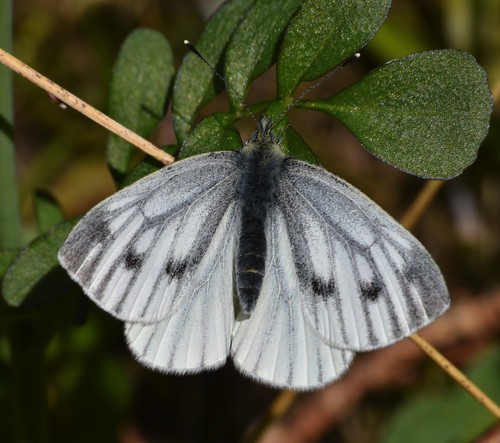
1. Green-veined white
Green-veined white (Pieris napi) is a distinctively white-winged butterfly that lays its eggs in a variety of food plants. This species displays observable differences dependent on sex: males possess only one dark spot on each forewing, whereas females display two. Unlike several of its cousin species, green-veined white prefers not to lay eggs in garden cabbages, rendering it less of a pest to farmers.
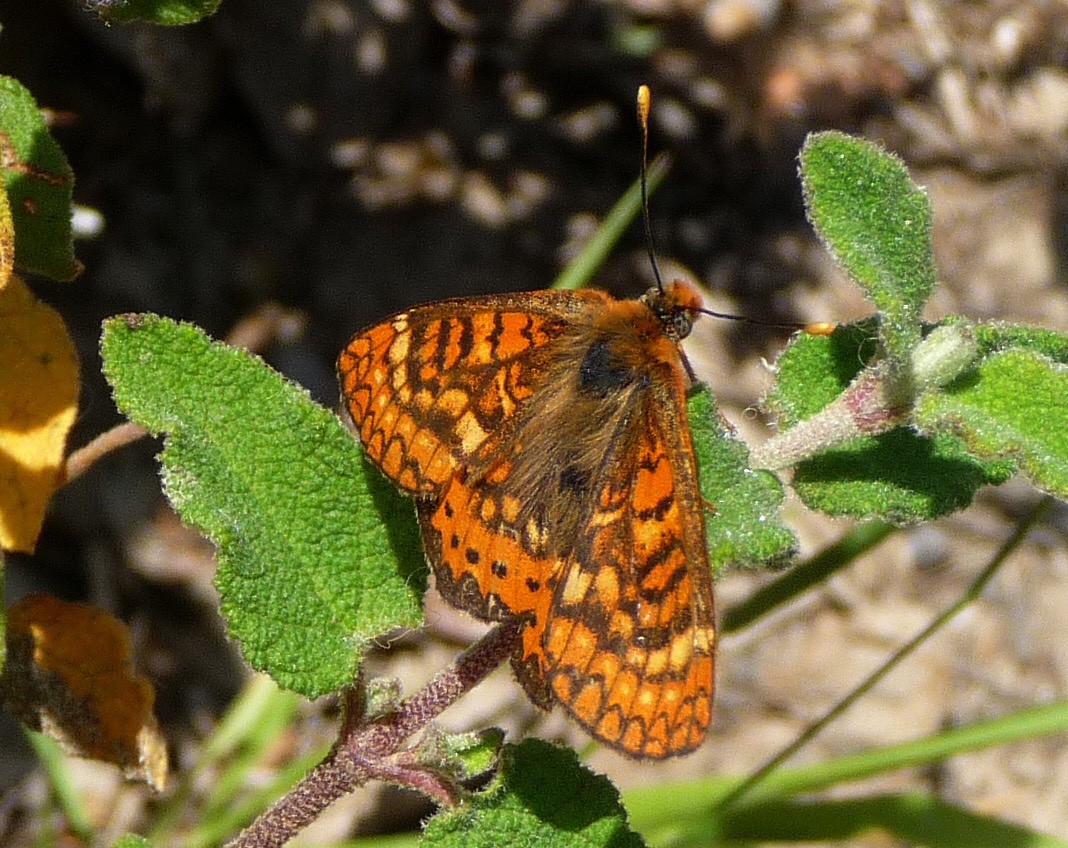
2. Marsh fritillary
Euphydryas aurinia has a wingspan of 30–42 millimetres (1.2–1.7 in) in males. The females are usually larger than the males, with a wingspan of 40–50 millimetres (1.6–2.0 in). These small butterflies are variable in markings and colouration, with many forms and subspecies. The adult butterflies usually show a chequered pattern of brown, orange, and yellow markings. Silver markings are present on the hindwing edge. The underside of the wings is patterned with yellow, orange, and brown without any silver colouration at all. The eggs are yellow, and easily identified because of the large batch size. The larvae are black. 
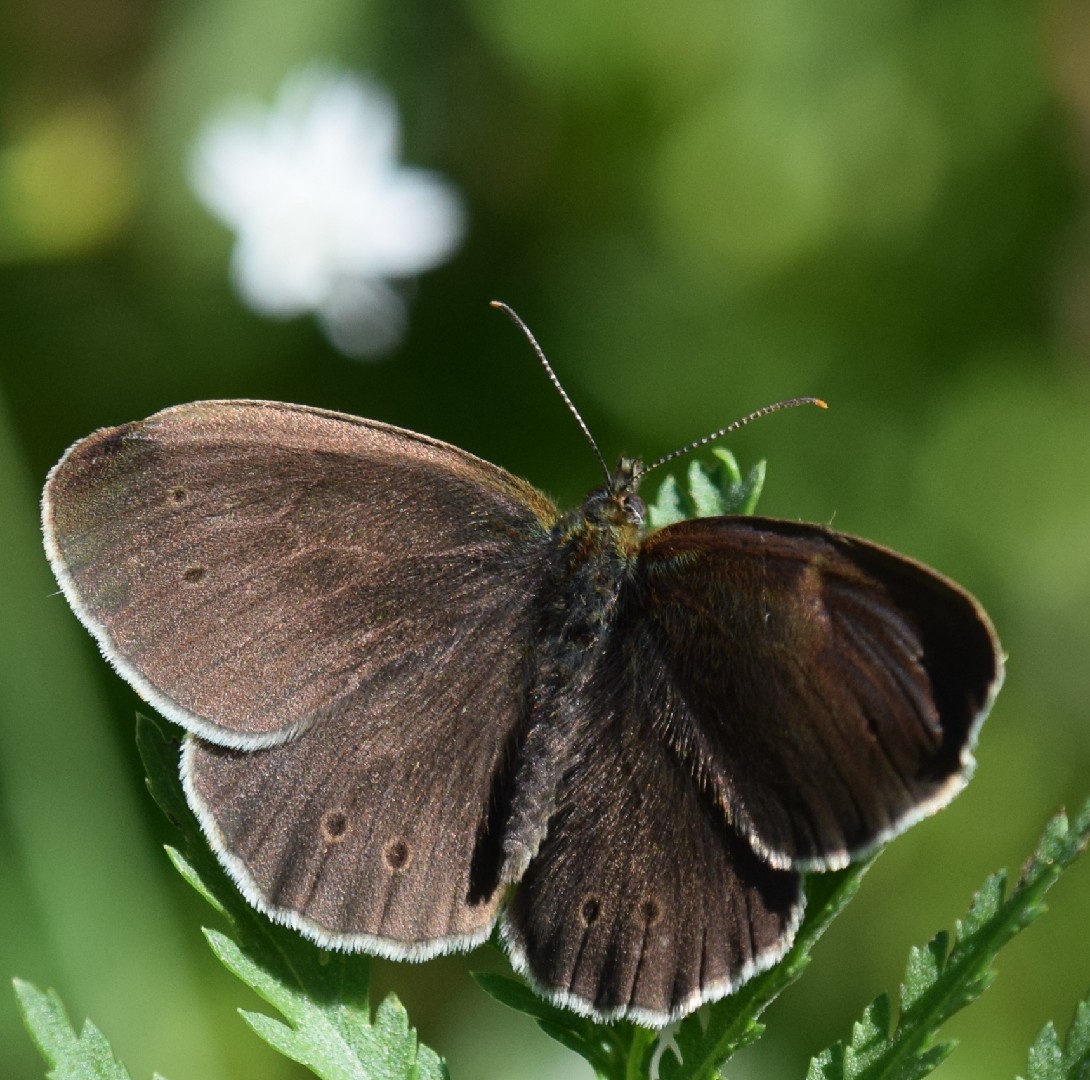
3. Ringlet
Aphantopus hyperantus is a medium-sized butterfly with a wingspan of up to 3.5 - 4 cm . The wing upper and lower sides are solid brown with small, yellowish-rimmed eyespots. The newly emerged ringlet has a velvety appearance and is almost black with a white fringe to the wings. The number and size of the eyespots is variable, they may be missing on the upper wing surface. The eggs are pale yellow when first laid, but become pale brown.The caterpillars are about 2.5 cm long. They are gray or light reddish brown and have dark, reddish brown and very fine dots. Dorsally there is a dark longitudinal line, which is widened at the segment boundaries. Toward the rear, this line is more intensely colored. The head is darker and has several faint longitudinal stripes. 
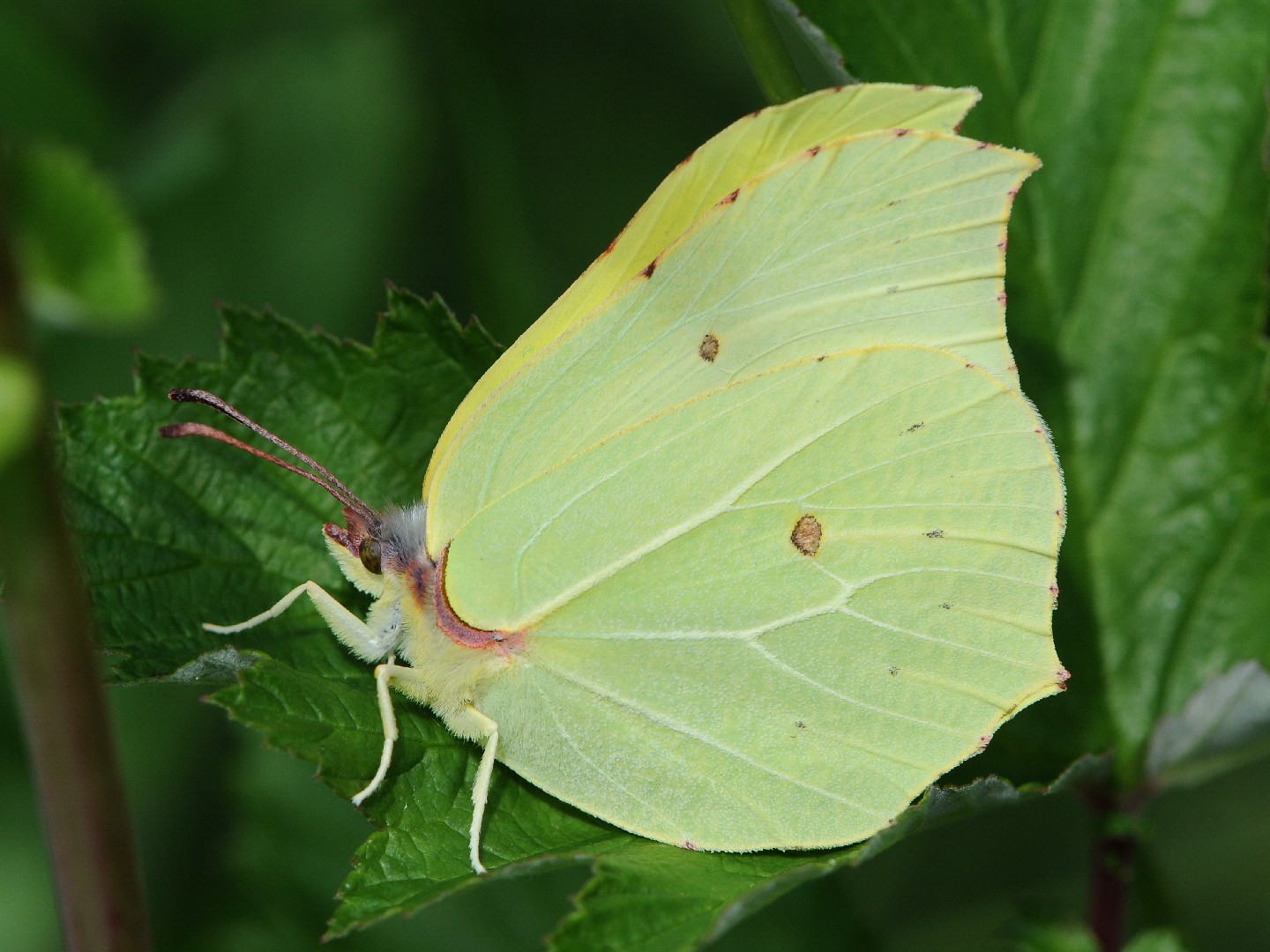
4. Common brimstone
Common brimstone (Gonepteryx rhamni) is an attractive species of butterfly; males display iridescence and have yellow wings, whereas females have white-green, non-iridescent wings. This species is wholly reliant on two species of buckthorn plant to lay its eggs. Consequently, the larvae consume large amounts of buckthorn.
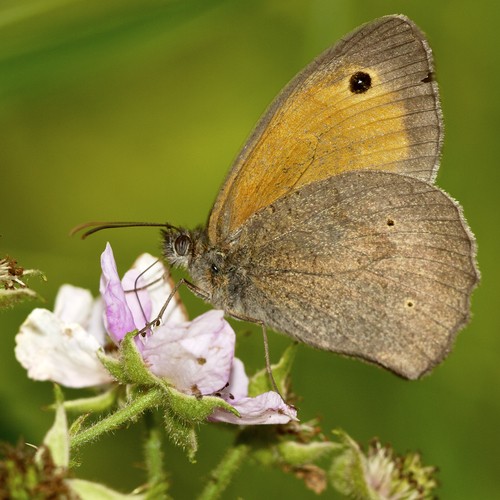
5. Meadow brown
The meadow brown (Maniola jurtina) is similar to the Gatekeeper in the way that it rests with its wings open due to the "eye spots" on either end of its wings that ward off predators. While the color is a deep brown, the caterpillar form is a beautiful bright green with little, white hairs and a dark line leading down its back.
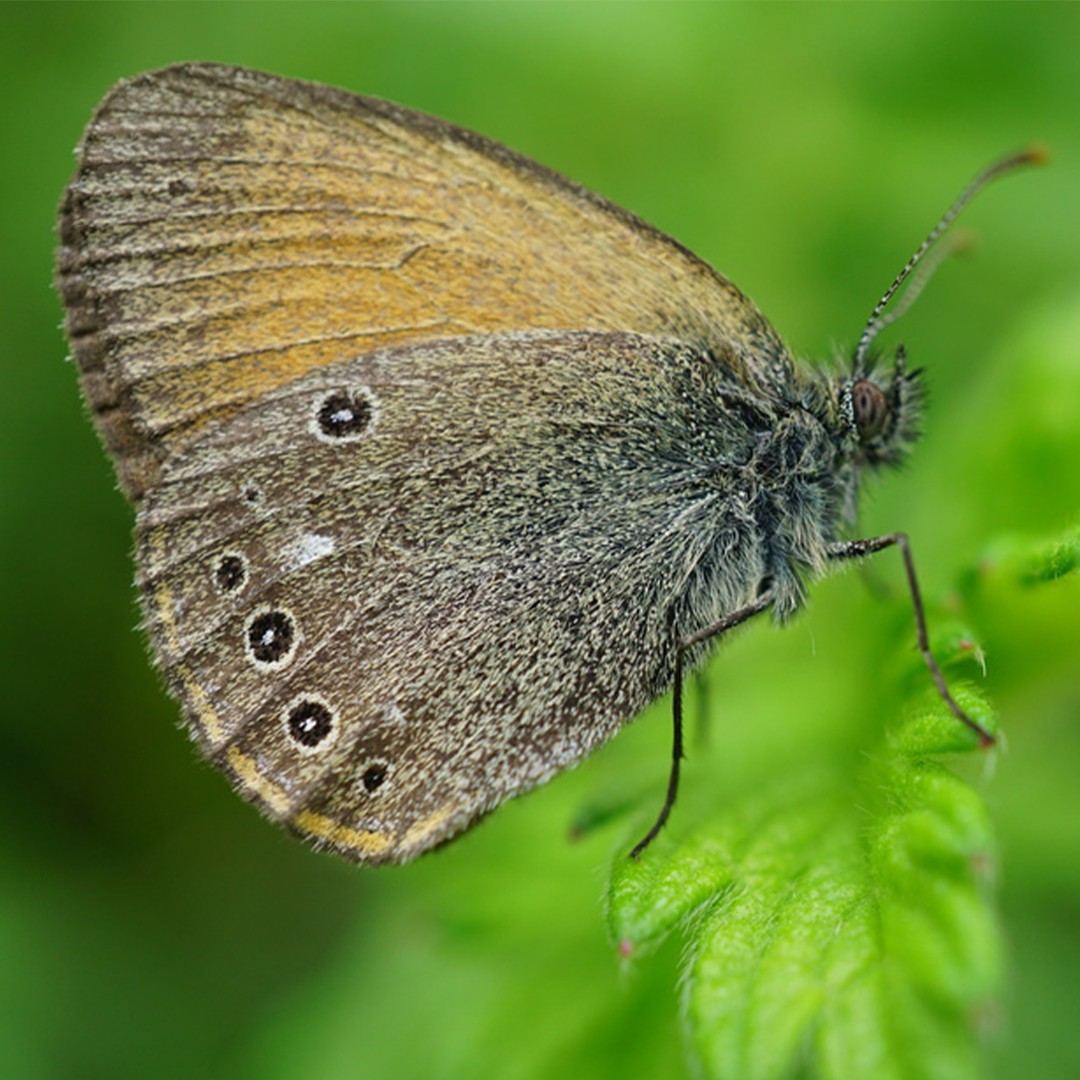
6. Chestnut Heath
C. iphis H. l. (= amyntas Btlr., mandane Ky.) (48 c). Disc of the forewing of the male on the upperside washed with copper-brown, of the female with yellowish brown, this colour being sometimes of a darker (ab. subnigra), sometimes of a lighter shade (ab. pallida). Hindwing uniformly blackish brown. Underside of forewing entirely without ocelli, rarely with a small, pale, apical ocellus. Hindwing with a few scattered and reduced ocelli on the underside. Beyond the middle are 2 large irregular white sinuous patches, either separate or thinly connected, by which the nymotypical form is recognized at a glance. The whole of Central and a large part of Northern Europe, and North and Central Asia; from England and Belgium to the Pacific Ocean, and from Finland and Livonia anaxagoras. to Dalmatia. In ab. anaxagoras Assmus, which occurs singly in Central Europe and is prevalent in Eastern Europe, the metallic line on the underside is absent, and the ocelli on the hindwing are reduced. — In iphicles Stgr. (= heroides Christ.) (48 c), on the other hand, the ocelli of the hindwing are very regular and distinct and appear on the upperside in the shape of brownish rings, so that there is a resemblance to hero ; from Central Asia. carpathica Horm. is a smaller mountain form the ocelli of whose hindwing are entirely or almost entirely obsolete; from the Carpathian Mts. — mahometana Alph. (84 a) also has no ocelli, or at the most a few white dots in their place; moreover, the upperside is uniformly soot-brown, and the whole underside dusted over with white; from the Tian-shan. ab. iphina Stgr. is a Central-Asiatic form in which the ocelli on the underside are bordered with brown ; it most probably does not occur anywhere as the only form of the species. — Larva dull green with a blue-green head, dark dorsal stripe and pale lateral one, as well as a red anal fork; spiracles yellowish red. Until May on grasses. Pupa green with white-spotted abdomen and dark-edged wing-cases. The butterflies are on the wing in June and July; they are found on grassy roads in woods and in damp meadows and are not rare, although there are not often large numbers of them together. The very big-bodied females do not often rise more than 1 or 2 feet above the ground. When disturbed they usually fly on only a few paces, following the direction of the road and settling again in the grass. 
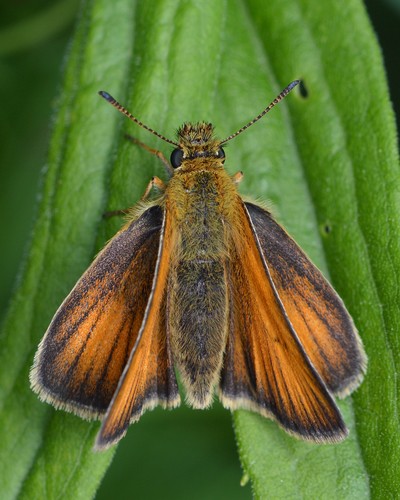
7. Essex skipper
With a wingspan of 2.5 - 3 cm, it is very similar in appearance to the small skipper Thymelicus sylvestris. They can be told apart by the undersides of the tips of their antennae: the essex skipper's antennae are black, whereas those of the small skipper are orange. 
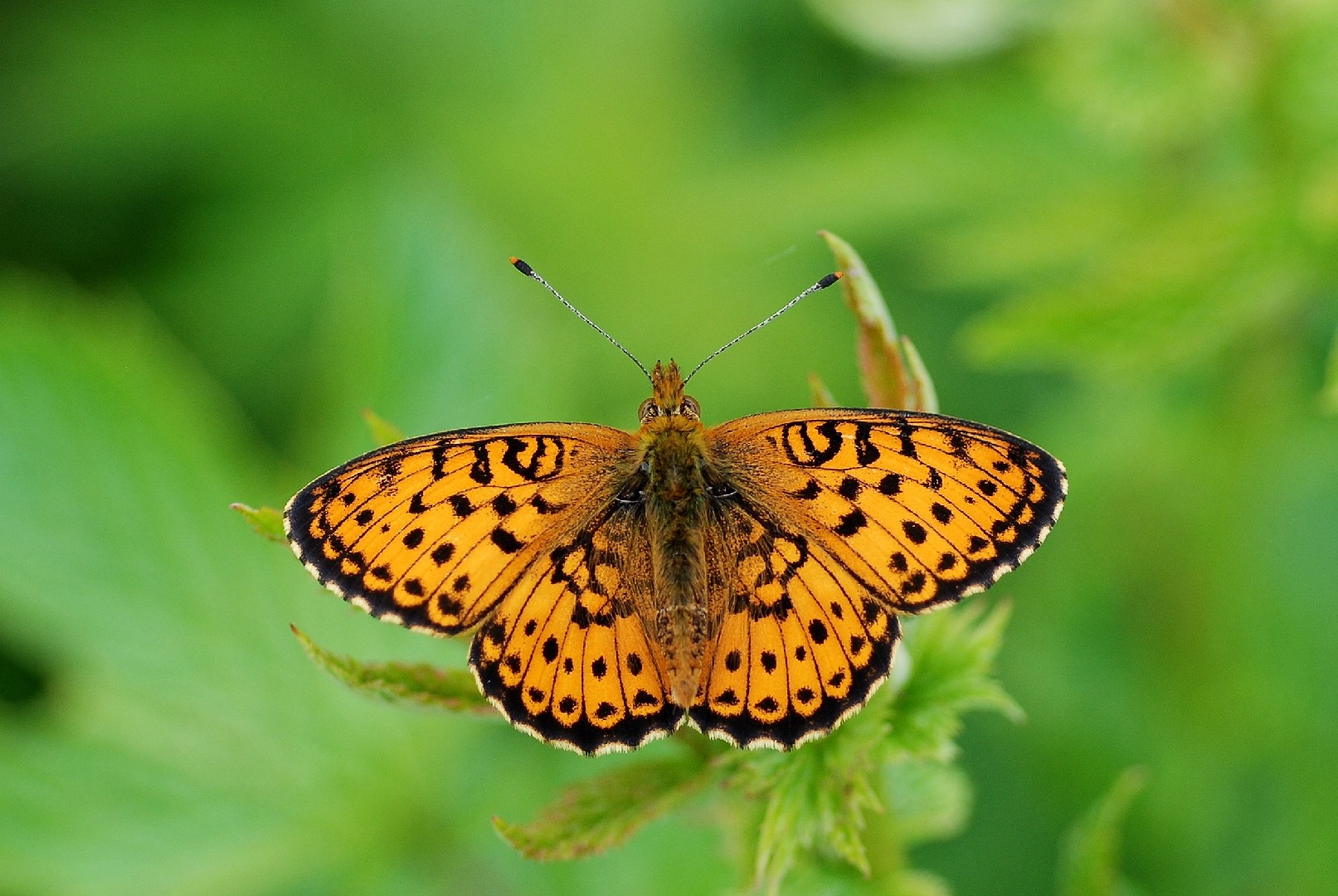
8. Lesser marbled fritillary
Brenthis ino is a medium-sized butterfly with a wingspan of 3.5 - 4.5 cm. Females are larger and usually darker than males. The antennae are clavate (club shaped). The basic color of the upper side of the wings is orange with several dark brown blotches. The edges are brown too, with a discontinuous stripe of small blotches. The lower side of the wings is creamy orange with an indented edge and dark brown blotches on the forewings, while the hindwings show brown-edged beige blotches and some ringed dark brown and violet shading spots. The wings of this species lacks any silver blotches. 
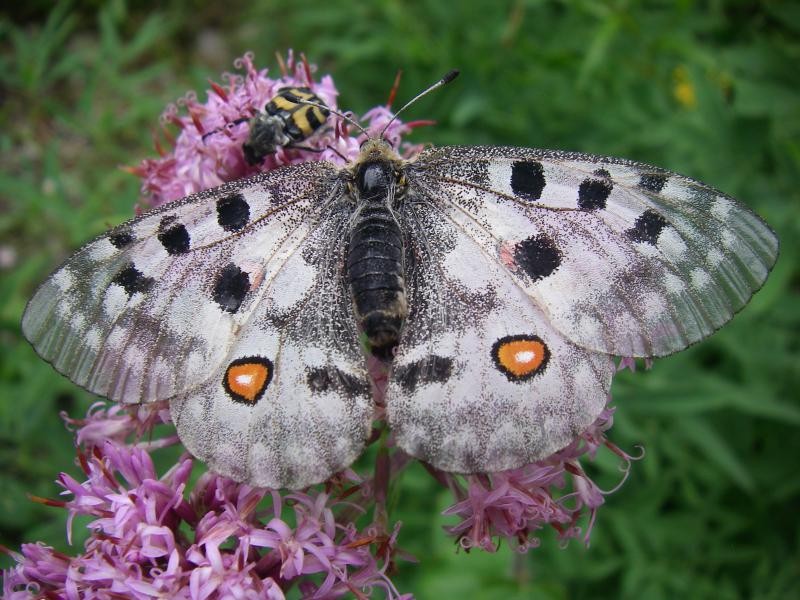
9. Apollo
Parnassius apollo has a wingspan of 6 - 9 cm in males, of 7 - 9 cm in females. The apollo butterfly shows a great deal of individual variation in the appearance, with an evident colour polymorphism. These very very large, beautiful and conspicuous white butterflies are decorated with five large black eyespots on the forewing and two bright red or sometimes orange eyespots on the hindwing. These striking red eyespots can vary in size and form depending on the location of the apollo butterfly, and the bright red colour often fades in the sun, causing the eyespots of older individuals to appear more orange. The wings are shiny, with slightly transparent edges, and some individuals are darker (sphragismelanistic); a general phenomenon common in many butterflies. The caterpillars of this species are velvety black with orange-red spots along the sides. 
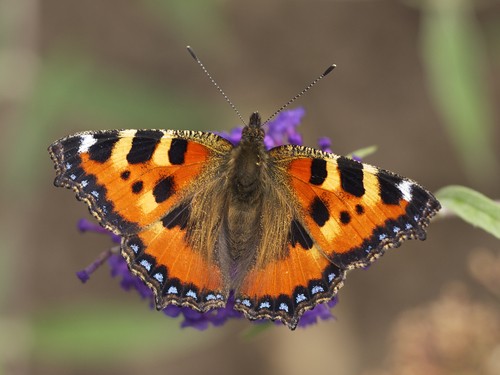
10. Small tortoiseshell
Small and colorful, small tortoiseshell (Aglais urticae) is the national butterfly of Denmark. However, it is capable of surviving anywhere the common nettle leaf may be found, which the larvae of this species depend on. Once among the most common butterflies in Europe and temperate Asia, this species is experiencing rapid declines for reasons still being investigated.
More
